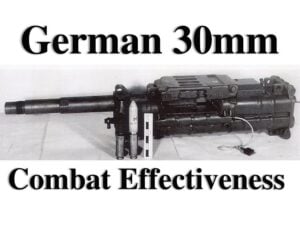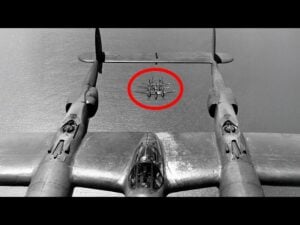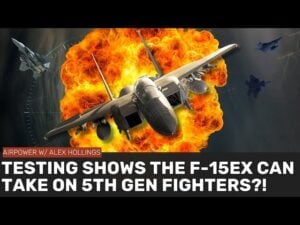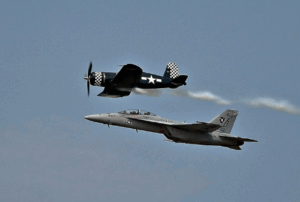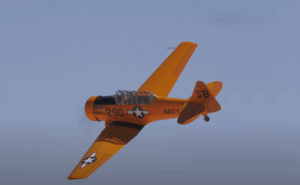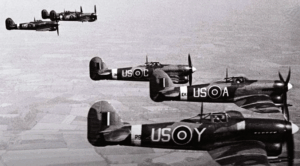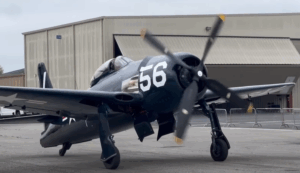The Story of One of WWII’s Best, Yet Overlooked, ‘Ferrari of the Sky’ Piston Engine Aircraft

The Antique Airshow / YouTube
During the years of the Second World War, many aircraft were built to serve various roles in combat and defense. One such aircraft was the de Havilland Hornet and its naval version, the Sea Hornet. These twin-engine fighters were developed after the success of the Mosquito and were designed to offer long-range performance and strong fighting ability for the Royal Air Force.
Design and Development
After the success of the Mosquito, de Havilland began working on a new fighter aircraft that could meet the needs of the Royal Air Force. The Hornet was born from a private venture that turned into a project to supply the air force with a long-range fighter. The development came after earlier projects, such as the DH101 and DH102, did not meet expectations. The designers looked to the Mosquito for inspiration and used similar methods in building the aircraft. For example, the Hornet’s fuselage was built using a wooden structure bonded to a metal frame with a strong adhesive. This method helped keep the aircraft light and allowed for streamlined shaping, which reduced drag during flight.

In addition, Rolls Royce worked with de Havilland to develop special Merlin engines, such as the Merlin 130 and 131. These engines had a reduced frontal area to help the aircraft cut through the air more efficiently. By January 1943, a full-size mock-up of the Hornet had been completed, and by June of that year, permission was given to start building the aircraft according to a new specification. This careful planning and design process aimed to create a fighter that could fly long distances and carry a range of weapons.
Prototypes
The Hornet project quickly moved into the prototype phase. On July 20, 1944, the first prototype was produced and began engine runs. This early version of the Hornet featured wings built with a technique where wood was firmly bonded to metal using redux adhesive. It also had contra-rotating propellers, a method that improved stability and overall performance. The engines, which produced 2070 horsepower, gave the aircraft the power it needed for high-speed maneuvers. On July 28, 1944, the first flight took place with Jeffrey de Havilland Jr. at the controls.

Soon after, a second prototype was built with improvements that allowed the aircraft to carry two 200-gallon drop tanks and to mount two 1,000-pound bombs under its wings. These changes aimed to enhance the Hornet’s range and combat flexibility. Historical records show that the design was completed in just over a year from the start of the detailed planning.
RAF Service
The Hornet reached the Royal Air Force in February 1945 when the first Hornet F Mk.1 was delivered. This version was planned to serve as a long-range fighter, but the end of the war meant that it did not see extensive combat during the conflict. After the war, the RAF formed squadrons to operate the Hornet.

For example, number 64 Squadron was established in May 1946, and additional units such as numbers 41 and 65 followed. Initially used for defending the airspace over the United Kingdom, Hornet squadrons later took on roles as interceptors and intruders starting in 1949. These aircraft provided valuable experience in long-range operations and helped shape later fighter designs.
Hornet Variants
The Hornet went through several changes and improvements during its production. The original fighter version, known as the Hornet F Mk.1, was soon followed by an improved fighter model called the Hornet F Mk.3. This version increased its range by 20 percent and was equipped to carry either additional fuel tanks, bombs, or even rockets.

There was also a photo reconnaissance version known as the Hornet PR.2. However, only a few of these were made before the decision was taken to cancel the program. Each variant was designed to meet specific needs and helped to demonstrate the versatility of the aircraft.
Far East Air Force and Air Racing
A large number of Hornets were assigned to the Far East Air Force, where they took on the role of ground attack during conflicts such as the Malayan Emergency in 1951. In this role, the Hornet was fitted with rockets and bombs to support ground forces fighting in difficult terrain. One squadron based in Singapore is noted for having conducted a very high number of airstrikes against enemy positions, marking a significant operational record in that region.

In addition to its combat role, the Hornet was known for its performance in air racing. In September 1949, one Hornet averaged over 435 miles per hour on a flight from England to Gibraltar. Other Hornets competed in national air races, earning respectable placements in speed challenges and showing off the aircraft’s strong performance capabilities.
Sea Hornet Development and Service
De Havilland also developed a navalized version of the Hornet known as the Sea Hornet. This variant was adapted for carrier operations, with changes such as folding wings, arrestor hooks for landing on ships, and special radar and radio equipment suited for naval tasks. The first Sea Hornet prototype took flight in April 1945. As trials continued, the Sea Hornet proved to be an effective twin-engine fighter designed to operate from aircraft carriers.

Orders soon followed from the Royal Navy, and the Sea Hornet became known as the navy’s first long-range escort fighter. A later version, the Sea Hornet NF Mk.21, was modified to include a second seat for an observer and featured a dome in the nose. Although slower than the single-seat version, it was used by one squadron during extensive deck trials. The Sea Hornet also served in secondary roles such as training before the Royal Navy phased it out in the early 1950s.
Export and Survivors
Some Sea Hornets were exported to countries like Canada and Australia for testing and evaluation. In Canada, one Sea Hornet even entered civilian use in 1950. Today, no Sea Hornets remain in active service. However, one aircraft is known to be under restoration in New Zealand, where efforts continue to restore it to flying condition.

Historical records and surviving documentation ensure that the legacy of this aircraft remains known to historians and aviation enthusiasts alike.














